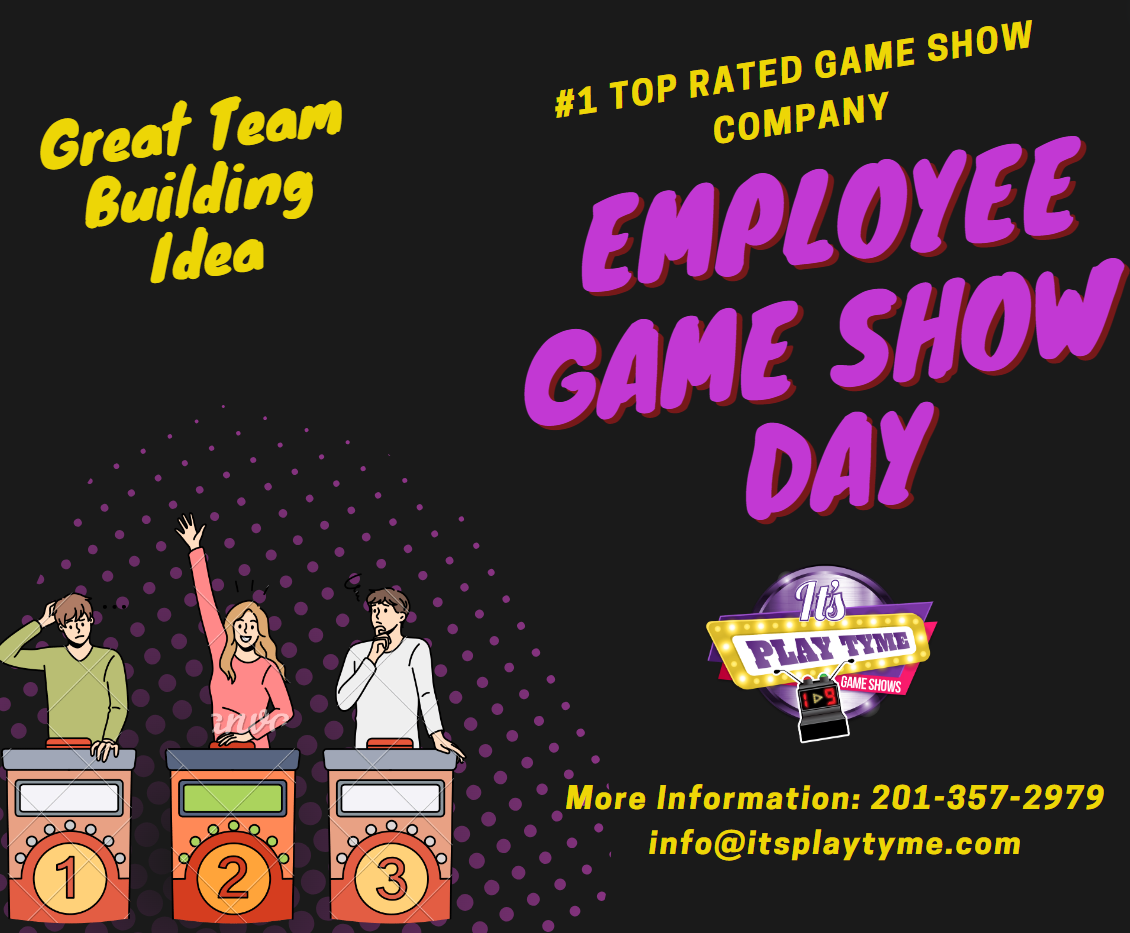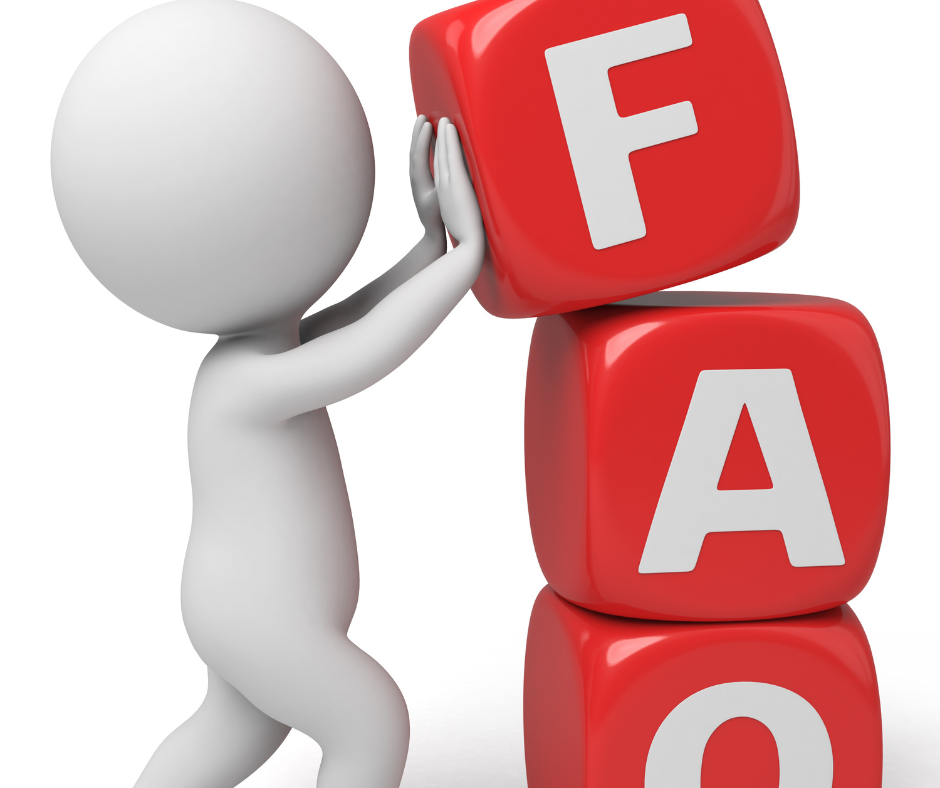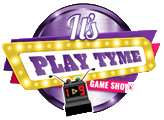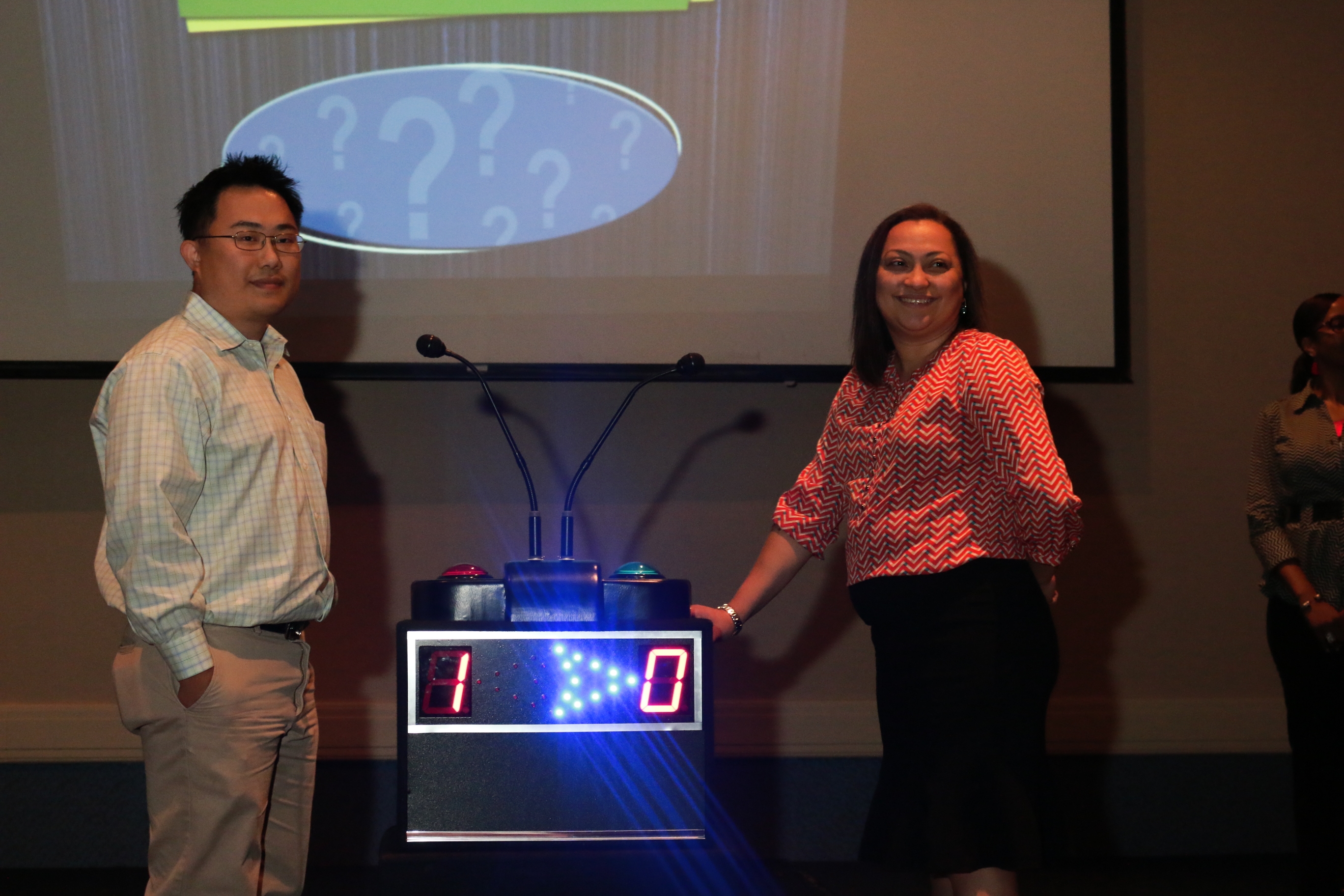Looking for team-building game ideas that get your people to engage, laugh, and bond without the usual eye rolls? You’re definitely in the right place.
When someone searches “team building game ideas,” they’re usually on a mission: Find fun, fast, and effective activities that won’t flop in front of the team. Whether you’re planning a department huddle, a company offsite, or a last-minute morale boost, the real goal is deeper than just “fun.” You want better communication, stronger collaboration, and a team that doesn’t just work together, but gets each other.
And here’s the truth: team building doesn’t have to be cheesy or complicated. The right games create shared experiences that break the ice, break down silos, and build trust in ways no memo ever could.
As Ashley Frabasilio, Employee Engagement Manager at Asana, puts it: “Shared experiences help teams build trust and encourage collaboration.” But here’s the catch, not all experiences are created equal.
Keep reading to uncover the team-building game ideas that fire up engagement, not just awkward chuckles.
Key Takeaways
- Discover a wide range of team-building game ideas to suit different team needs.
- Learn how these activities can improve communication, leadership, and collaboration.
- Explore categories such as icebreakers, problem-solving, and virtual team-building activities.
- Find fun and engaging activities to enhance team dynamics.
- Get insights into creating a more cohesive and productive team environment.
Book a Live Game Show!
[Best Team Building Games - We Come to Your Location - 100% Satisfaction Guaranteed - Click Below - SERIOUS INQUIRIES ONLY]
Why Team Building Games Matter
Team-building games are essential for fostering a collaborative work environment. These activities are a core component of work life that any company invested in developing effective workers should engage in. By providing opportunities for team bonding, organizations can foster friendship and community within the workplace, which helps improve worker satisfaction and happiness.
When team members feel connected, they are more likely to be engaged and motivated. Around 13% of employees assert that they are more productive when happy, making team-building a worthwhile investment. Moreover, team-building events are not a one-time affair but a continuous process necessary to form stronger ties between workers and the company.
These activities can have a significant impact on various aspects of the workplace. They can streamline onboarding, improve communication, boost morale, increase trust, and encourage creativity among team members. When team building is a workplace staple, employees feel valued, which boosts their enthusiasm and confidence.
By investing in team building, management shows that it cares about employee well-being, which can lead to increased job satisfaction. Furthermore, these activities help build reliance on teammates, promoting a sense of unity and cooperation within the team. As a result, team-building games matter because they contribute to a more positive, productive, and collaborative work environment.
Incorporating team-building game ideas into the work culture is crucial for developing a strong, cohesive team. Organizations can reap numerous benefits, from improved communication and collaboration to increased employee satisfaction and productivity.
Quick Icebreaker Team Building Games in Under 30 Minutes
Quick icebreaker games are a great way to initiate meaningful interactions among team members, helping to break down barriers and build rapport.
These activities are designed to be engaging, easy to understand, and simple to execute, making them perfect for teams looking to establish a positive and collaborative environment.
Many of these quick icebreakers double as team-building game ideas that can energize any group and set the tone for stronger teamwork.
Two Truths and a Lie
“Two Truths and a Lie” is a classic icebreaker game that encourages team members to share interesting facts about themselves. To play, each participant tells two true statements and one false statement about themselves. The other team members then have to guess which statement is the lie.
This game is an excellent way to get to know each other on a personal level, promoting laughter and conversation. It’s suitable for teams of any size and can be completed within 15-20 minutes, making it a time-efficient activity.
Penny for Your Thoughts
“Penny for Your Thoughts” is another engaging icebreaker that involves a bit of creativity and interaction. Participants are given a penny (or any coin) and asked to share a thought, memory, or story related to the year stamped on the penny.
This activity not only encourages team members to share personal anecdotes but also fosters a sense of connection through shared experiences. It’s a simple yet effective way to stimulate conversation and can be adapted to fit the size and preferences of the team.
One Word Exercise
The “One Word Exercise” is a straightforward yet powerful icebreaker that asks team members to come up with a single word that describes themselves, their current state of mind, or their expectations from the team. This word can be anything – an adjective, a noun, or even a verb.
By sharing just one word, team members can gain insights into each other’s perspectives and feelings. This exercise is particularly useful for teams looking to understand individual motivations and attitudes, promoting empathy and understanding.
What Do We Have in Common?
“What Do We Have in Common?” is an activity designed for teams of 10 or more people, requiring about 30 minutes to complete. The objective is to divide the team into smaller groups of three to five people and ask them to identify commonalities among the group members.
These commonalities can range from favorite TV shows, disliked ice cream flavors, to shared hobbies. The key is to encourage team members to look beyond superficial similarities and discover meaningful connections. After the group discussions, bring everyone together to share their findings, further strengthening team bonds.
As noted by team building experts, “The more things team members can find that everyone in the group has in common, the better!” This activity not only reunites divided teams by highlighting shared likes and dislikes but also provides a platform for team members to discover commonalities they might not have otherwise noticed.

Communication-Focused Team Building Game Ideas
To foster a more cohesive and communicative team, consider incorporating games that challenge and improve these skills. Effective team communication is crucial for success in any collaborative project. The following games are designed to enhance communication among team members.
Back-to-Back Drawing
This activity involves two team members sitting back-to-back, with one describing a drawing and the other attempting to recreate it based on the description. This game highlights the importance of clear and precise communication.
Birthday Line Up
In this activity, team members are required to line up in order of their birthdays without speaking to each other. They must use non-verbal communication to achieve this. It’s a fun way to encourage team members to think creatively about communication.
Charades
A classic game that involves acting out words, phrases, or characters without speaking. Team members guess what is being acted out. This game promotes understanding and interpretation of non-verbal cues.
Minefield
Minefield is a team-building game that improves trust and partnership between colleagues through clear communication. It’s one of those classic team-building game ideas that’s simple yet incredibly effective. To play this game, around 20 small objects are required to create an obstacle course. Team members work in pairs, with one person blindfolded and the other guiding them through the course using verbal instructions.
The seeing partner must guide their blindfolded teammate through the obstacle course without touching any objects. This exercise builds trust between team members and emphasizes the importance of clear, precise communication. The activity can be made more challenging by adding time constraints or creating more complex obstacle patterns.
| Game | Objective | Skills Developed |
|---|---|---|
| Back-to-Back Drawing | Recreate a drawing based on a verbal description | Clear communication, listening |
| Birthday Line Up | Line up in order of birthdays without speaking | Non-verbal communication, problem-solving |
| Charades | Guess what is being acted out | Non-verbal communication, interpretation |
| Minefield | Navigate an obstacle course blindfolded with verbal guidance | Trust, clear communication, and teamwork |
These games not only enhance communication but also foster a more collaborative and trusting team environment. By incorporating such activities into team-building exercises, organizations can significantly improve overall team performance.
Problem-Solving Team Building Activities
To tackle complex problems, teams can benefit from engaging in problem-solving team-building activities that foster creativity and collaboration. These activities are designed to challenge teams and improve their collaborative problem-solving skills.
The Marshmallow Challenge
The Marshmallow Challenge is a fun and interactive team-building activity that requires teams to build a structure using limited materials, with a marshmallow on top. The goal is to build a freestanding structure that can hold the marshmallow without it falling.

Your First Idea
“Your First Idea” is a team-building activity that encourages teams to generate as many ideas as possible within a set time frame. This activity promotes creative thinking and helps teams come up with innovative solutions.
Spectrum Mapping
Spectrum Mapping is a visual team-building activity that involves mapping out different ideas and perspectives on a particular issue. This activity helps teams to identify patterns, connections, and relationships between different ideas.
What Would X Do?
“What Would X Do?” is a creative problem-solving exercise that encourages team members to approach challenges from different perspectives. In this activity, team members are presented with a problem and asked to come up with a famous person or leader they admire. They then approach the problem as if they were that person, considering how they would think and act.
For a team of 5-10 people, this activity takes around 45-60 minutes. The steps involve presenting a problem, identifying a famous person or leader, and then approaching the problem from their perspective. This exercise helps teams break out of conventional thinking patterns and can lead to unexpected, innovative solutions.
Book a Live Game Show!
[Best Team Building Games - We Come to Your Location - 100% Satisfaction Guaranteed - Click Below - SERIOUS INQUIRIES ONLY]
Trust Building Team Games
Trust is a fundamental element in any successful team, and there are several team games designed to foster this essential quality. These activities are crucial for enhancing collaboration, improving communication, and increasing overall team performance. By incorporating trust-building exercises into team-building initiatives, organizations can cultivate a more cohesive and effective team environment.
Human Knot
The Human Knot is a popular trust-building game that involves team members standing in a circle and putting their hands in the center. Each member should grab the hand of someone across from them, not next to them. The team must then work together to untangle themselves without letting go of each other’s hands. This activity promotes communication, problem-solving, and trust among team members.
Blindfolded Square
In the Blindfolded Square game, team members are divided into groups and given a rope or string. The task is to form a square while blindfolded, relying on verbal instructions from their teammates. This activity requires trust, effective communication, and collaboration to achieve the desired outcome.
Swift Swap
Swift Swap is a dynamic trust-building activity where team members stand in two lines facing each other. They are given a task to complete, such as swapping a pen or a small object, without speaking. This game encourages non-verbal communication and trust among team members as they rely on each other to complete the task successfully.
Frostbite
Frostbite is an imaginative team-building game that requires teams to pretend they are in the Arctic and must build a shelter for survival. This activity is designed for groups of five or six people and takes around 20-30 minutes to complete. The necessary materials include sticky notes, toothpicks, thick cardboard boxes, and a fan. Team members democratically elect a leader to guide them through the activity, but the leader is unable to participate physically due to “frostbite.” The team members are blindfolded and must build the structure using the leader’s verbal instructions. This exercise teaches supervisory abilities, instruction-taking skills, time management, and improves communication between leaders and team members. The fan can be used to simulate Arctic conditions, adding an extra challenge to the activity. For more team-building exercises like Frostbite, you can explore additional resources such as team building exercises.
These trust-building games are essential for developing strong, cohesive teams. By incorporating activities like Human Knot, Blindfolded Square, Swift Swap, and Frostbite into team-building initiatives, organizations can promote a culture of trust, collaboration, and effective communication.
Creative Team Exercises
Creative team-building activities are not just fun; they are a strategic way to build stronger, more effective teams. These exercises encourage collaboration, creativity, and problem-solving among team members, leading to a more cohesive and productive team.
Classify This
“Classify This” is an engaging team-building exercise that challenges team members to categorize objects or ideas into different groups. This activity promotes creative thinking and problem-solving. Team members are given a set of items and must decide how to categorize them, encouraging discussion and collaboration.
Sales Pitch
In “Sales Pitch,” team members are tasked with developing and presenting a sales pitch for a product or service. This exercise enhances creativity, public speaking, and persuasion skills. Teams must work together to come up with an innovative pitch, fostering collaboration and innovative thinking.
Mood Pictures
“Mood Pictures” is a creative exercise where team members express their current mood or a given theme through art. This activity encourages self-expression and can provide insights into team members’ emotions and perspectives. It’s a unique way to foster empathy and understanding within the team.
Create Your Own Game
“Create Your Own Game” is a meta-activity that challenges team members to design their own team-building exercises. Suitable for teams of 5-12 people, this activity takes 30-60 minutes to complete. Each team member creates an original problem-solving activity, which can be physical, mental, or creative, and presents it to the group. This exercise is both fun and a real creative challenge, allowing team members to showcase their strengths and providing insight into their problem-solving approaches.
To play, start by giving each team member time to create their activity. Then, have them present their challenges to the group. If time allows, play some of the created games afterward. This exercise not only fosters creativity but also reveals what team members value in collaborative activities.
Virtual Team Building Games for Remote Teams
As remote work becomes the norm, virtual team-building games have emerged as a crucial tool for fostering collaboration and camaraderie among team members.
Show and Tell
“Show and Tell” is a classic icebreaker that can be easily adapted to a virtual setting. Team members take turns sharing an object that holds personal significance, explaining why it’s important to them.
This activity encourages team members to share a bit about their personal lives, fostering a sense of connection and understanding.
Photo Caption Contest
A “Photo Caption Contest” is a fun and creative way to engage remote teams. Share a photo and ask team members to come up with humorous or insightful captions.
This activity not only brings some humor into the virtual workspace but also encourages creativity and teamwork.
Online Group Games
“Online Group Games” can range from virtual escape rooms to collaborative online puzzles. These games are designed to challenge teams and promote problem-solving together.
They are an excellent way to build trust and improve communication among team members.
Virtual Trivia
“Virtual Trivia” is a competitive, educational, and entertaining game that gives remote teams a chance to bond. It can be used to start meetings with energy or as a regular end-of-day event to bring the team together.
To play, start a meeting with a quick game of trivia or host a regular virtual trivia night. The team size can range from 6 to 20 people, and the activity can be tailored to last between 30 to 90 minutes.
You can choose themes such as office trivia about company facts, or other themes like TV shows, music, sports, or geography. Rotating hosts among team members can add variety and give everyone a chance to lead.
Virtual Trivia can be structured as individual competition or team-based challenges, depending on the group size. This activity tests knowledge in a fun way while creating shared experiences that strengthen team bonds.
Find the Perfect Game Show for Your Team
Pick the Ideal Match for Your Team’s Unique Goals and Needs – Click Below
Outdoor Team Building Activities
Outdoor team-building activities offer a unique opportunity for teams to bond and develop essential skills. These activities are designed to foster collaboration, improve communication, and promote problem-solving among team members.
Scavenger Hunt
A scavenger hunt is an engaging outdoor team-building activity that encourages collaboration and problem-solving. Teams are given a list of items to find or challenges to complete, and the first team to finish wins.

Geocaching Adventure
A Geocaching Adventure is a high-tech outdoor team-building activity that combines technology with exploration. This exercise helps team members work together to achieve specific goals using GPS technology and problem-solving skills. It’s one of those innovative team-building game ideas that blends fun with strategy in a unique outdoor setting.
To play, teams will need a GPS device or a smartphone app capable of finding geocaches based on coordinates. The activity involves creating a series of hidden items at specific geographic locations, potentially containing clues to a larger puzzle.

This activity promotes problem-solving in a creative way, especially when riddles and puzzles are incorporated into the experience. By working together to navigate through the challenges, team members can develop stronger bonds and improve their collaboration skills.
Indoor Team Building Games
Indoor team-building games are an excellent way to foster collaboration and camaraderie among team members in a relaxed environment. These activities are particularly useful for teams that spend most of their time indoors, providing a much-needed break from the usual work routine.
Office Trivia
Office trivia is a fun and engaging way to challenge team members’ knowledge and promote teamwork. If you create a quiz that includes a mix of work-related and general knowledge questions, you can encourage team members to collaborate and communicate effectively.
To set up an office trivia session, you can either create your own questions, use pre-made quizzes, or hire a company to do it for you. It’s also a good idea to offer small prizes for the winning team to add an extra layer of excitement.
Board Games and Puzzles
Board games and puzzles are simple yet effective indoor team-building activities that promote collaboration in a relaxed setting. They provide a fun spin on teamwork without requiring extensive preparation or special equipment.
There are many options to choose from, including traditional board games, strategy games, cooperative games, or jigsaw puzzles of varying difficulty. For larger teams, you can play multiple games simultaneously or modify the rules to include everyone.

These activities can be set up in break rooms or common areas, allowing team members to engage with them during downtime. Working on puzzles together can reveal different problem-solving approaches and create natural opportunities for conversation.
Moreover, these low-pressure activities allow team members to collaborate in a context completely removed from work tasks, helping to build stronger relationships and improve overall team dynamics.
Team Building Games for Large Groups
For large teams, selecting the right team games is key to enhancing collaboration and camaraderie. When teams are large, it can be challenging to ensure that every member is engaged and feels included. However, with the right activities, large teams can become just as cohesive as smaller ones.
Code of Conduct
Establishing a code of conduct is an essential team-building activity for large groups. This involves creating a set of rules or guidelines that team members agree to follow, promoting a positive and respectful environment. To implement this, divide the large team into smaller groups and ask them to discuss and agree on a code of conduct. This exercise encourages collaboration and helps to establish a shared understanding of the team’s values and expectations.

Common Thread
The “Common Thread” game is an activity designed for groups of 10 or more people, requiring about 30 minutes to play. To play, divide the team into smaller groups of three to five people. Then, ask each group to identify things that everyone in their group has in common. This could be a favorite TV show, a disliked food, a common hobby, or a shared experience. The goal is to find commonalities that are not too superficial or obvious, encouraging team members to discover unexpected connections.
After the groups have identified their common threads, bring everyone together to share their findings. This not only strengthens team bonds but also highlights the diverse experiences and interests within the team. By doing so, “Common Thread” helps large groups discover unexpected connections between team members, fostering a sense of unity and cooperation.
5-Minute Team Building Activities
Quick 5-minute team-building activities are a great way to boost morale, encourage communication, and build trust among team members. These activities are designed to be short, engaging, and effective, making them perfect for busy workdays or as icebreakers before meetings.
Compliment Circle
The Compliment Circle is a simple yet powerful activity that fosters positivity and appreciation within the team. To play, have team members stand in a circle and give each other compliments. This activity encourages team members to appreciate each other’s strengths and builds a supportive team culture.
For example, a team might use this activity to acknowledge a colleague’s help on a project or to celebrate a team member’s work anniversary. The Compliment Circle can be adapted to fit various team sizes and can be completed within a few minutes.
| Activity | Duration | Objective |
|---|---|---|
| Compliment Circle | 5 minutes | Foster positivity and appreciation |
One-Word Icebreaker
The One-Word Icebreaker is another effective activity that provides insight into team members’ feelings about work-related topics. This activity involves dividing the team into groups of 4-5 people and asking each member to give a one-word descriptor related to a specific work topic or event.
For instance, the topic might be a new company policy or a recent team project. Each group discusses their chosen words and then selects one word to share with the larger group, prompting broader discussion and helping to “read the room” before diving into more complex topics.
To execute this activity, present the topic and ask each team member to respond with one word that comes to mind. For a deeper exercise, allow groups a few minutes to discuss the reasons behind their chosen words. This simple activity can uncover concerns or questions that need to be addressed, making it a valuable tool for team leaders.
| Team Size | Topic | Duration |
|---|---|---|
| 4-5 people per group | Work-related event or topic | 20 minutes (can be condensed to 5 minutes) |
Team Building Games for Building Collaboration
Team-building activities are designed to promote unity and cooperation, and certain games stand out for their ability to build collaboration. These games are not just fun; they are carefully crafted to enhance teamwork, problem-solving, and communication among team members.
Egg Drop Challenge
The Egg Drop Challenge is a classic team-building game that requires creativity, problem-solving, and collaboration. The objective is simple: protect an egg from breaking when dropped from a certain height using limited materials.
To conduct this activity, you’ll need a few basic supplies: eggs, various crafting materials (such as straws, tape, scissors, paper), and a surface or structure from which to drop the egg contraptions.

Gutterball
Gutterball is a collaborative team-building activity that requires coordination and communication to achieve a shared goal. In this game, team members are tasked with moving a ball from one end of the room to another using a makeshift “gutter” created from materials like PVC pipe halves, folded cardboard, or paper.
Gutterball is played with 8-20 people and takes approximately 30-60 minutes. Team members must work together, holding their section of the gutter and coordinating with teammates to pass the ball along. To increase difficulty, obstacles such as elevation changes, barriers, or time constraints can be introduced.
This activity emphasizes the importance of coordination, communication, and adapting to challenges as a unified team. By working together to overcome obstacles, team members develop a stronger sense of collaboration and trust.
Book a Live Game Show!
[Best Team Building Games - We Come to Your Location - 100% Satisfaction Guaranteed - Click Below - SERIOUS INQUIRIES ONLY]
Strategic Team Building Games
In today’s fast-paced work environment, strategic team-building games play a crucial role in aligning team members and promoting a culture of collaboration. These activities are designed to enhance teamwork, improve communication, and drive teams towards achieving their company goals.
Strategic games can range from simple icebreaker activities to complex problem-solving exercises. Two effective examples of such games are “Company Concentration” and “All the News.”
Company Concentration
“Company Concentration” is a strategic team game that focuses on enhancing team members’ understanding of the company’s objectives and their roles in achieving these goals. This activity involves creating a set of cards or a memory game where key company goals, initiatives, or values are written on the cards. Team members then participate in a concentration game, matching the cards to demonstrate their understanding of the company’s strategic objectives.
| Activity | Objective | Team Size | Time |
|---|---|---|---|
| Company Concentration | Enhance understanding of company goals | 8-20 people | 30-40 minutes |
All the News
“All the News” is a strategic team-building activity that helps teams envision and get excited about future achievements. It’s one of the more creative team-building game ideas that encourages forward-thinking and goal visualization through storytelling. To play, divide the team into groups of 3–6 members from the same department. Ask each group to create newspaper headlines about potential future accomplishments, written as if these achievements have already happened.
This activity not only fosters a sense of unity among team members but also aligns the team’s vision by generating enthusiasm for upcoming projects and identifying potential pathways to success.

- Divide participants into groups of 3-6.
- Ask each group to create newspaper headlines about future achievements.
- Have groups share their headlines and discuss the measures required to reach these goals.
By doing so, “All the News” becomes a powerful tool for aligning team vision and driving collective effort towards achieving company goals.
“The way to get started is to quit talking and begin doing.”
Long-Term Team Building Activities
Sustained team-building activities can significantly enhance collaboration, creativity, and overall team performance. Unlike one-time events, long-term activities foster a deeper sense of unity and shared purpose among team members.
Quarterly Challenge
Implementing a quarterly challenge is an effective way to keep the team engaged and motivated over an extended period. This involves setting a specific goal or task that the team must work on together over the course of a quarter. The challenge should be meaningful, achievable, and aligned with the organization’s objectives.
For example, a company might challenge its teams to reduce energy consumption or to come up with innovative solutions to a specific problem. The process of working towards a common goal encourages collaboration, creativity, and a sense of accomplishment.
| Challenge Type | Description | Benefits |
|---|---|---|
| Environmental | Reduce energy consumption by 20% | Promotes sustainability, teamwork |
| Innovation | Develop new product features | Fosters creativity, problem-solving |
| Community Service | Organize a quarterly volunteer day | Enhances team bonding, social responsibility |
Team Journal
The Team Journal is a long-term team-building activity that creates a living history of your organization’s culture and experiences. By placing a large, blank journal or scrapbook in a common area, you encourage team members to contribute to it over time.
The journal can include prompts or guidelines to ensure that the content is positive and constructive. Team members can write down quotes, note fun events, or include ephemera that reflects the team’s culture.
“The Team Journal becomes a tangible representation of shared experiences and organizational culture that new members can explore.”
To set up the Team Journal, start by selecting a journal or scrapbook that is inviting and accessible. Place it in a common area such as the break room, along with pens, markers, tape, and other items that team members can use to contribute. Establishing clear guidelines is crucial to ensure that the content remains appropriate and respectful.
- Encourage team members to write down quotes from readings or from fellow team members.
- Suggest including notes about fun work events or milestones achieved.
- Invite team members to add photos or other ephemera that capture the team’s spirit and culture.
Over time, the Team Journal will become a valuable resource that reflects the team’s journey, achievements, and culture. It serves as a reminder of how far the team has come and provides new members with a unique insight into the organization’s history and values.
Customizing Team Building Game Ideas for Your Team
Adapting team-building activities to your team’s size, dynamics, and work environment is key to their success. A one-size-fits-all approach often falls short in achieving the desired outcomes, as different teams have unique needs and challenges.
Considering Team Size and Dynamics
The size and dynamics of your team play a significant role in determining the suitability of team-building activities. For smaller teams, activities that foster close relationships and encourage collaboration are often more effective. In contrast, larger teams may benefit from activities that promote departmental or cross-functional collaboration. For instance, a team-building participation strategy could involve dividing a large team into smaller groups for specific challenges.
When planning team-building activities, it’s essential to consider the physical space available. In-office activities should be adapted to the office layout, ensuring that they don’t disrupt the normal workflow. For example, games that require a lot of movement might not be suitable for small or cluttered offices.
Adapting Games for Different Work Environments
Different work environments, such as traditional offices, hybrid workplaces, and fully remote teams, require tailored approaches to team building. For traditional offices, in-person activities like trust-building exercises or problem-solving challenges can be highly effective. Hybrid teams benefit from a mix of in-person and virtual activities, ensuring inclusivity. For fully remote teams, virtual team-building games such as online escape rooms, virtual trivia, or digital scavenger hunts can help foster a sense of unity and collaboration.
To adapt outdoor activities for indoor spaces, consider alternatives that mimic the outdoor experience. For example, an indoor scavenger hunt or virtual outdoor challenges can be engaging alternatives during inclement weather. It’s also crucial to modify activities based on the industry context, as what works for a creative agency might not be suitable for a healthcare team.
Flexibility is key when implementing team-building activities across various work environments. Having backup plans in place can help mitigate any unforeseen challenges, ensuring that the activities remain enjoyable and effective for all participants.
Conclusion – Game Ideas for Teams
As we’ve explored, team-building activities are essential for fostering a collaborative and productive work environment. By implementing the right team-building games and activities, you can improve communication, increase trust, enhance collaboration, and strengthen relationships among team members.
The most effective team activities are those that align with your team’s specific needs, preferences, and work environment. It’s crucial to make team building an ongoing process rather than a one-time event to maintain and strengthen team bonds. Experimenting with different types of activities will help you discover what resonates most with your unique team.
Even simple, quick activities can have a significant positive impact on team dynamics when done regularly. Start with low-pressure activities and gradually introduce more challenging ones as team comfort levels increase. Try at least one new team building game idea from this article with your team this week and watch your team’s collaboration and productivity grow.

FAQs About Team Building Game Ideas
Q1. What makes a team-building game truly effective for improving team communication?
The best team-building games foster open communication, requiring team members to collaborate and solve challenges together. Activities like “Back-to-Back Drawing” or “Minefield” are excellent examples, as they enhance verbal and non-verbal communication skills.
Q2. How long should a team-building activity last to be effective?
Most team-building games can be effective within 15-60 minutes, depending on the activity. Icebreakers like “Two Truths and a Lie” are quick and impactful, while more elaborate games such as “Scavenger Hunts” or “Problem-Solving Challenges” can take longer to complete.
Q3. What types of games are best for large teams?
For large teams, activities that can be scaled are key. “Face-2-Face Feud” works well with big groups as it promotes friendly competition and teamwork. Alternatively, activities like “Code of Conduct” or “What Do We Have in Common?” can help large teams bond and engage.
Q4. Can team-building games be done virtually for remote teams?
Absolutely! Virtual activities like “Virtual Trivia” and “Photo Caption Contests” are perfect for remote teams. These games foster camaraderie and engagement while being accessible through online platforms, making them great for teams working from different locations.
Q5. How can I measure the effectiveness of a team-building game?
Effectiveness can be measured through team feedback, observing improvements in communication, and seeing how well team members collaborate post-activity. Also, setting clear goals for the game helps track if those objectives were met, such as better collaboration or higher morale.
Q6. How can I customize a team-building game for my company’s specific goals?
Customizing a game to your company’s needs can involve tailoring the questions, challenges, and even game formats to focus on key skills like problem-solving, leadership, or creativity. For example, you can adjust a game like “Company Concentration” to highlight company values or objectives.









